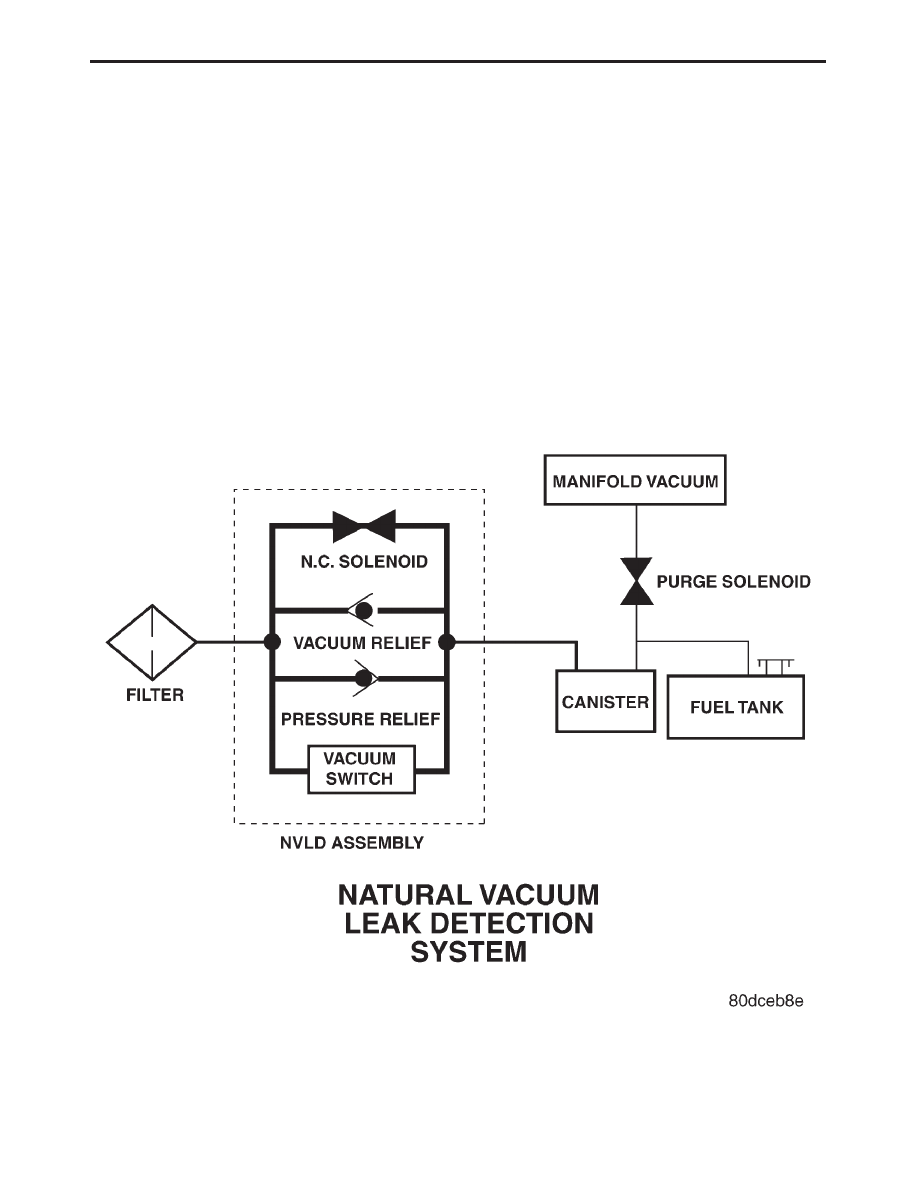Chrysler Town, Dodge Caravan. Manual - part 550

2. Purge Flow:
The above rationality check is considered suffi-
cient to confirm purge solenoid function and con-
formance with the purge flow test requirement. The
Purge Flow Monitor is passed based on switch
activity when purge is turned on or based on a rich
fuel control shift when purge is turned on.
Medium and Large Leak Test (Intrusive)
NOTE: This intrusive test will only be run if
the Small Leak (passive) test fails, or is
inconclusive (the switch does not close)
Enabling Conditions:
•
40 °F to 90 °F
•
Engine temperature at startup within 10 °F of
the ambient temperature
•
Fuel level less than 85%
The intrusive Medium and Large leak are con-
ducted as follows:
•
De-energize the NVLD solenoid to seal the can-
ister vent.
•
Activate purge shortly after closed loop. Pull the
tank vacuum past the vacuum switch point (1
9
H2O vacuum) of the NVLD for a specific time
while tracking the standard purge flow rate.
•
Turn purge off and determine how long it takes to
decay the tank vacuum and reopen the switch.
Determine the leak size from the time it took to
reopen the switch. Note: Fuel level is an impor-
tant determining factor.
•
If the switch does not close, a more aggressive
purge flow will be applied to determine if it is a
very large leak, missing fuel cap, problem with
the NVLD device, purge flow problem, etc...
FIGURE 1
8
GENERAL INFORMATION